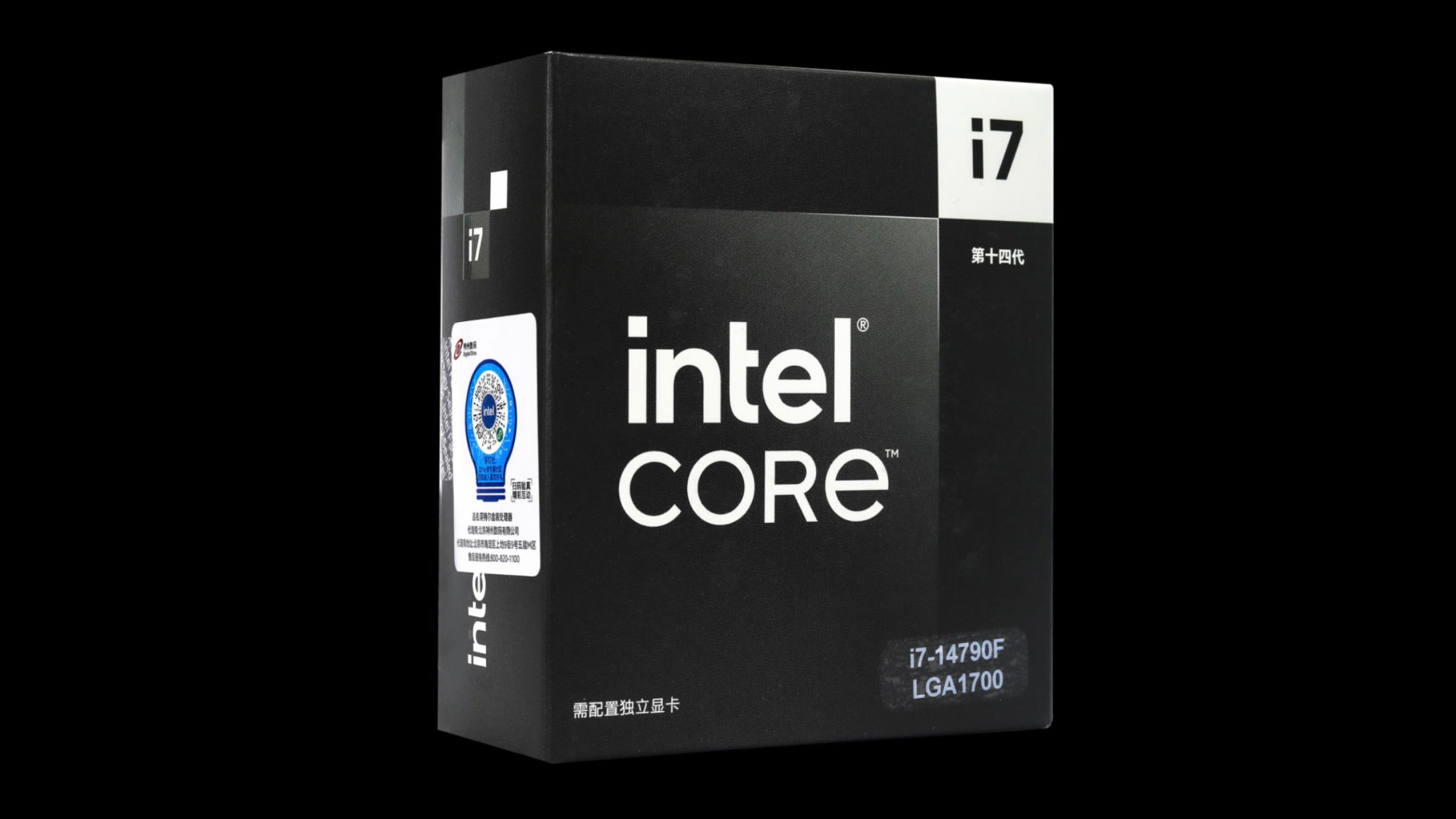
Intel’s latest 14th Generation Raptor Lake Refresh processors have found their way into the list of best CPUs. Some China-exclusive SKUs, like the Core i7-14790F and Core i5-14490F Black Edition, have also arrived on the market, and now we have the former’s first benchmark (via Benchleaks).
The Core i7-14790F is a controversial model name since common sense suggests it’s an enhanced variant of the Core i7-14700F. However, the two processors are nothing alike, and don’t let “9” in the Core i7-14790F’s name fool you into thinking it’s faster. The Core i7-14700F has an 8+12 design, while the Core i7-14790F rocks an 8+8 layout, meaning the latter has four fewer E-cores. The clock speeds are identical between the two chips.
The Core i7-14700F has 1MB more overall cache than the Core i7-14790F. However, the cache is distributed differently between the Core i7-14700F and Core i7-14790F. The former favors more L2 cache over L3 cache, whereas, with the latter, it’s the other way around. The Core i7-14700F has 4MB more L2 cache but 3MB less L3 cache than the Core i7-14790F.
| Processor | Cores / Threads (P+E) | P-Core Base / Boost Clock (GHz) | E-Core Base / Boost Clock (GHz) | Cache (L2/L3) | PBP / MTP | Memory |
|---|---|---|---|---|---|---|
| Core i7-14700F | 20 / 28 (8+12) | 2.1 / 5.4 | 1.5 / 4.2 | 61MB (28+33) | 65W / 219W | DDR4-3200 / DDR5-5600 |
| Core i7-14790F | 16 / 24 (8+8) | 2.1 / 5.4 | 1.5 / 4.2 | 60MB (24+36) | 65W / 219W | DDR4-3200 / DDR5-5600 |
| Core i7-13790F | 16 / 24 (8+8) | 2.1 / 5.2 | 1.5 / 4.1 | 57MB (24+33) | 65W / 219W | DDR4-3200 / DDR5-5600 |
| Core i7-13700F | 16 / 24 (8+8) | 2.1 / 5.2 | 1.5 / 4.1 | 54MB (24+30) | 65W / 219W | DDR4-3200 / DDR5-5600 |
It’s more than fair to say that the Core i7-14790F is a buffed-up version of the previous Core i7-13790F. Core-wise, both chips wield eight P-cores and eight E-cores. Nonetheless, the Core i7-14790F enjoys slightly higher boost clock speeds. We’re considering a 200 MHz higher P-core and boost and a 100 MHz E-core boost improvements on the Core i7-14790F.
Overall, the Core i7-14790F rocks 3MB more cache than the Core i7-13790F. Both processors stick to a 24MB L2 cache. Therefore, the enhancement resides in the L3 cache. A 3MB more L3 cache on the Core i7-14790F represents a 9% uplift.
We recommend caution with leaked benchmarks, especially with Geekbench 6 comparisons. Finding comparable results is always challenging due to the difference in system specifications, operating systems, and sometimes benchmark versions. There’s only one Core i7-14790F Geekbench 6 submission. We chose this and a few Core i7-14700F entries for us to compare. We picked these Core i7-14700F and Core i7-13790F results since they present the closest similarity to the Core i7-14790F result.
Intel Core i7-14790F Benchmarks
| Processor | Single-Core Score | Multi-Core Score |
|---|---|---|
| Core i7-14700F | 2,905 | 18,642 |
| Core i7-14790F | 2,877 | 18,631 |
| Core i7-13790F | 2,661 | 18,509 |
In the single- and multi-core tests, there was less than a 1% performance difference between the Core i7-14700F and Core i7-14790F. While we know that the Core i7-14790F was seemingly paired with DDR5-5586, the Geekbench 6 report didn’t reveal the memory speed for the Core i7-14700F, so it could have been using faster memory that narrowed the performance gap.
Meanwhile, the Core i7-14790F posted 8% higher single-core numbers than the Core i7-13790F. However, the multi-core score wasn’t impressive since the delta was less than 1%. In this case, however, we know that the Core i7-13790F had access to DDR5-6384 memory. The Core i7-14790F should have slightly better multi-core performance.
The Core i7-14790F retails for $410 in China, whereas the vanilla Core i7-14700F sells for around $10 more. That’s not a big difference in pricing to persuade Chinese consumers to pick one over the other.







